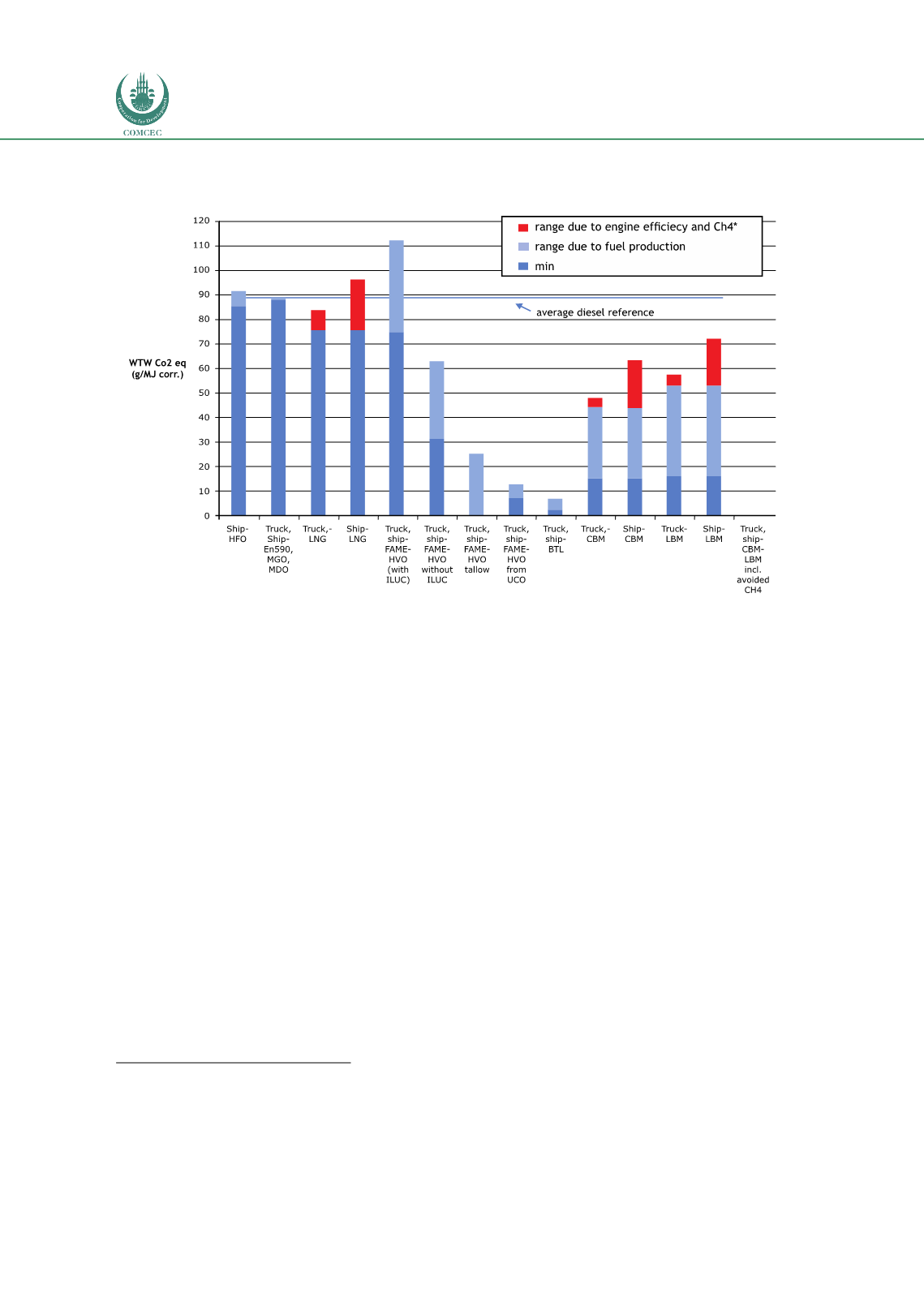

Improving Transnational Transport Corridors
In the OIC Member Countries: Concepts and Cases
60
Figure 22: Well to Wheel (WTW)
26
GHG emissions for different fuels and transport
modalities: truck, inland ship and sea ship
Source: LNG for trucks and ships: fact analysis Review of pollutant and GHG emissions – Final, TNO, 2015.
Introducing LNG/CNG for heavy-duty vehicles in TEN-T network faces several bottlenecks:
a.
Economic barriers
. In developing LNG/CNG infrastructure, there is a hurdle of
needing to reach a minimum penetration threshold. The commercial viability depends
highly on customers demand (number of LNG/CNG trucks per filling station), gas oil
spread and the location of the filling station.
b.
Psychological barriers
. Logistic companies have been very conservative in their
approach towards the use of alternative fuel for transport to tackle environmental
issues. They would first like to see the technical viability and performance of the
technology compared to the diesel solution.
c.
Regulatory barriers
. Large-scale roll out needs fixed and formalized standards,
which can be applied for all filling stations.
Alternative fuels are key to improving the security of energy supply, reducing the impact of
transport on the environment and boosting EU competitiveness. The lack of harmonized
development of alternative fuels infrastructure across the Union prevents the development of
economies of scale on the supply side and Union-wide mobility on the demand side. New
26
WTW emissions are the total of Well To Tank/WTT emissions (that are produced during the production of the fuel) and
Tank To Wheel/TTW emissions (that are produced when the vehicles are being operated, as such the emissions are directly
dependent on the required amount of fuel).
















